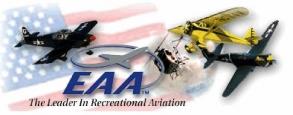![]()
Oil Separator Installation Guide
For Lycoming Engines
![]()
Oil Separator Installation Guide
For Lycoming Engines
Installation Guidelines - Lycoming Engines
Lycoming engines typically have one plug in the accessory case, which can be removed and replaced with a hose fitting. If the plugged port is unavailable there are three possible solutions for installing a drain port. The first, which is the most labor intense, would be to remove a cylinder rocker cover, drill a 7/16" hole in the center of the lower half of the cover, keeping this fitting above the level of the push rod housings. Place an AN315-7 nut over the hole and weld to the rocker cover. Clean rocker cover and nut and repaint. Install an MS20852-4, 90 degree elbow fitting, with a jam nut, washer and o-ring packing. Leave the fitting loose until the installation is complete. Install the rocker cover with a new gasket. Run 1/4" ID aluminum tube thru the baffle using a rubber grommet for abrasion protection and connect to the separator with a small piece of hose and clamps. (See the photo below, though a Continental rocker cover is shown, the installation would look similar.)
The second solution, which is also labor intensive, would be to remove one of the oil return lines from a rear cylinder and modify it by welding an additional piece of tubing creating a "Y" connection. The positioning and configuration of the "Y" connection must provide a continued downward slope for drainage from the separator. (See the photo below.)
The third and simplest solution is to install the "optional" RMJ-AERO Self Sealing Clamp On Adapter, to the oil sump filler neck. The only requirement for this installation, is drilling a 1/4" diameter hole in the neck. The stainless steel, self-sealing clamp provides a return line connection to the tank using one bolt for clamping and sealing. The silicone cushion material is oil and fuel resistant and is rated for -120° to +450° F temperatures. Instructions for installation are included with the adapter. Order Pt #L103 for Lycoming engines.
When rerouting an existing breather line, you may need to block existing holes in the baffling and or make new holes in different locations. Normally the breather line will need to take a high route toward the firewall from the connection point at the front or rear area of the crankcase. This will provide drainage of oil in the breather line back to the engine. Be sure to use rubber grommets for all holes in the baffling to prevent abrasion.
Connect the separator drain to the port installation of your choice with oil resistant tubing unless piping with aluminum tube. We recommend silicone tubing, which can handle elevated temperatures. Remember this is not a pressurized line. It is very near atmospheric pressure during operation. If you cannot find silicone tubing locally, contact RMJ-AERO. We stock 1/4" tubing and can cut any length required. (Current prices can be found on the Prices & Warranty page.) Use Aero-Seal or Breeze Miniature hose clamps for installing all separator hose connections.
Click on this link to see the clamp installation guide.
Self Sealing Clamp On Adapter Installation Guide For Lycoming Engines
RMJ-AERO Pages
[RMJ-AERO Main Page]
[Oil Separator]
[Custom Fabrication Services]
[General Installation Guide]
[Separator Maintenance]
[Aerobatic Elbow]
[Continental Installation Guide]
[Continental Clamp On Adapter Installation Guide]
[Lycoming Installation Guide]
[Lycoming Clamp On Adapter Installation Guide]
[Prices & Warranty]
[RMJ-AERO Gallery]
|
RMJ-AERO Aviation Products for the Homebuilder 402 Tyrone Drive Forsyth, IL 62535
E-Mail: info@rmjaero.com |
 Join & Support The EAA And Your Local EAA Chapter God Bless The USA |